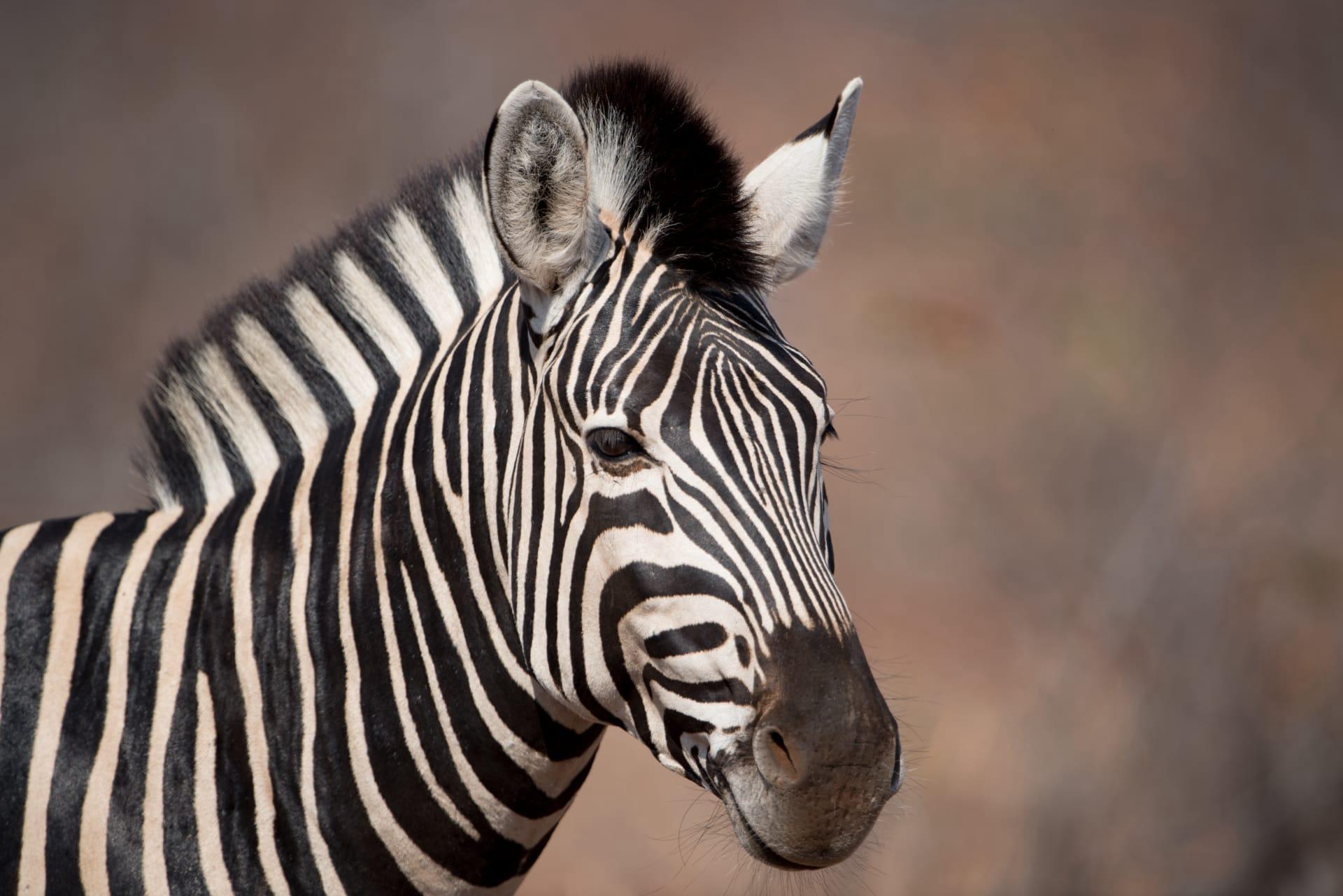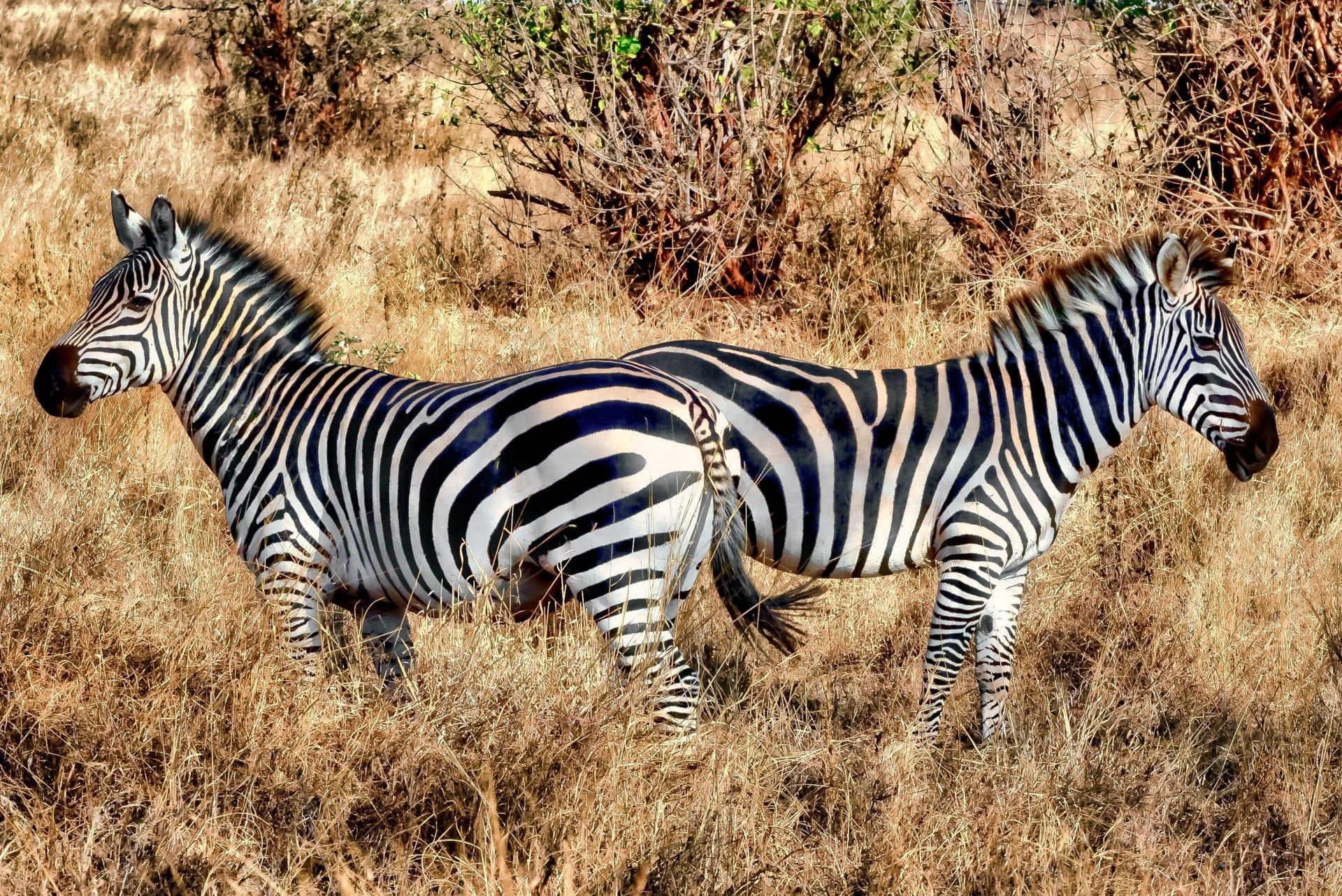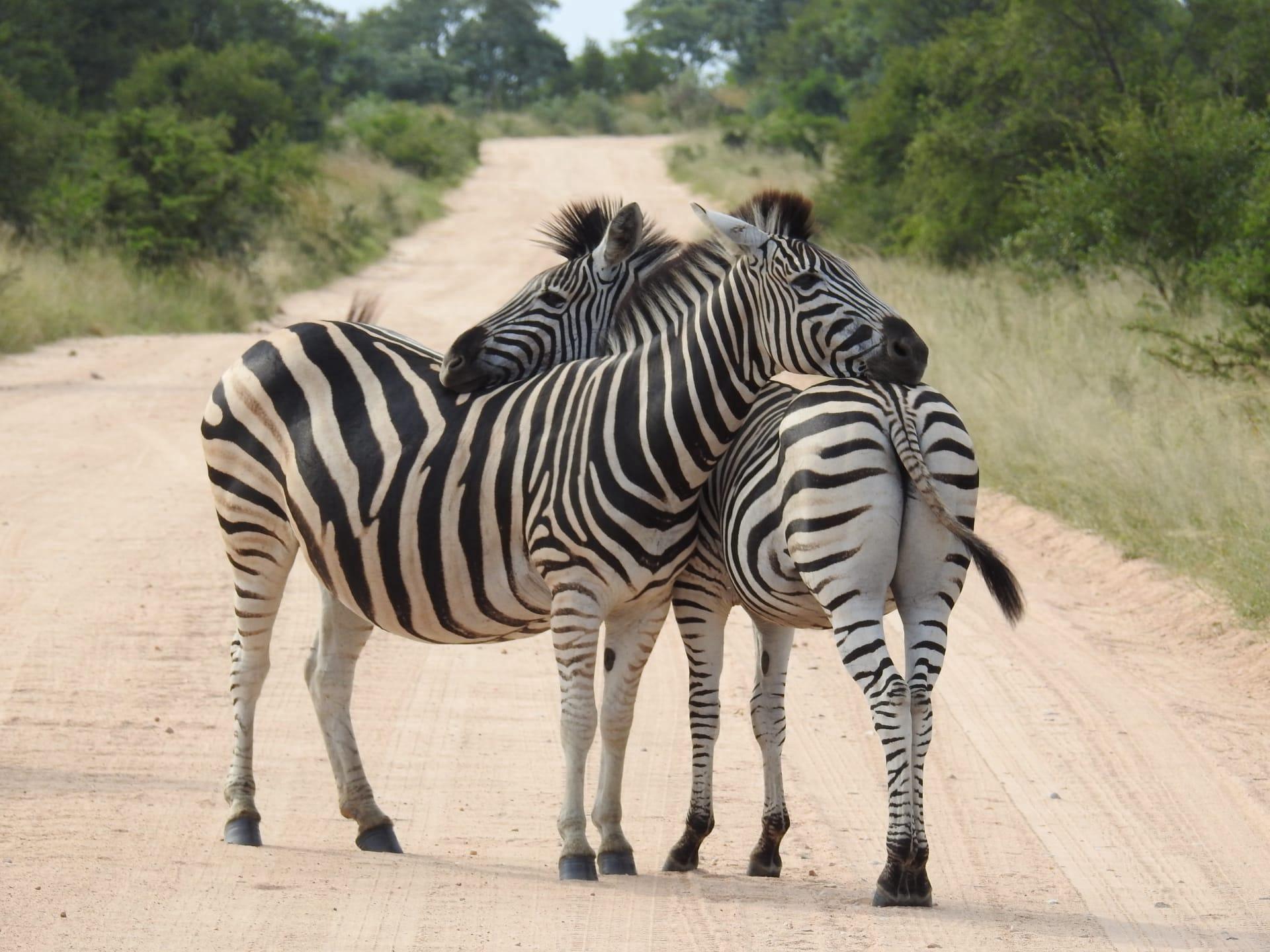Zebra Trivia
- Home /
- Trivia Question /
- Animal /
- Zebra Trivia
1
Question: Why do zebras have stripes?
Answer: Zebras' stripes are a fascinating example of nature's ingenuity. Scientists believe these stripes serve multiple purposes. Firstly, they act as a natural bug repellent, deterring biting flies, which are less likely to land on striped surfaces. Secondly, stripes may serve as a cooling mechanism. The black stripes get warmer than the white areas, creating small vortexes of air that cool the zebra. Additionally, stripes may help in camouflage and confusing predators, especially when zebras are in a group.
Question: Are zebras black with white stripes or white with black stripes?
Answer: This is a common curiosity about zebras. Scientifically, zebras are black with white stripes. This is evident from the fact that their skin underneath the fur is black. The white stripes and bellies are a result of selective pigmentation where certain skin areas lack melanin, the pigment responsible for the black color.

2
Question: Can zebras be domesticated like horses?
Answer: Despite their resemblance to horses, zebras have never been truly domesticated. Zebras are more unpredictable and can be aggressive, with a strong flight response. They have a hierarchical social structure and can bite or kick to assert dominance or when threatened. Domestication requires specific temperamental traits and a certain type of social structure, which zebras don't naturally possess.
Question: Do all zebras have the same stripe pattern?
Answer: No, each zebra has a unique stripe pattern, much like human fingerprints. This uniqueness can be used for individual identification. The stripe patterns vary not only among individuals but also among different species of zebras. For example, the Grevy's zebra has narrower stripes than the common plains zebra.

3
Question: What is the primary diet of zebras?
Answer: Zebras are primarily grazers and their diet consists mostly of grasses. They are adapted to a variety of grasslands and savannas, allowing them to consume different types of grasses available in these habitats. They also eat leaves, bark, and stems, but grass is the main component of their diet.
Question: How do zebras communicate with each other?
Answer: Zebras use various vocalizations and body movements to communicate. They bray, bark, snort, and whinny to express different emotions or alert others of danger. Visual cues are also important; they use ear position and facial expressions to communicate mood or intentions. Tail movements can indicate excitement or agitation.

4
Question: How fast can a zebra run?
Answer: Zebras are quite speedy animals. They can reach speeds up to 65 kilometers per hour (40 mph) when galloping. This speed is crucial for escaping predators like lions and hyenas. Zebras also have excellent stamina and can maintain a fast pace for a considerable distance.
Question: What is the social structure of a zebra herd?
Answer: Zebras usually form groups known as 'harems,' consisting of one stallion and several mares with their young. These groups are quite stable, with strong social bonds. Stallions protect the herd and lead them to water and pastures. Sometimes, zebras also form larger temporary groups or bachelor groups of young males.

5
Question: How long do zebras live?
Answer: In the wild, zebras have an average lifespan of around 25 years. However, in captivity, with better nutrition and absence of predators, they can live up to 40 years. Factors affecting their lifespan include predation, habitat loss, and competition for resources.
Question: Are zebras endangered?
Answer: The conservation status of zebras varies by species. The Plains zebra is classified as 'Near Threatened' due to habitat loss and hunting. The Mountain zebra is 'Vulnerable', mainly due to habitat destruction and competition with livestock. The most concerning is the Grevy's zebra, listed as 'Endangered', primarily due to hunting, habitat loss, and reduced access to water sources.